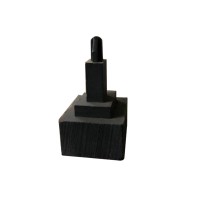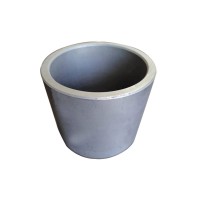Graphite For EDM
EDM graphite, also known as Electrical Discharge Machining graphite, refers to a specific type of graphite material that is widely used as an electrode in the EDM process.
Why use graphite for EDM?
Graphite has many advantages, making it the most widely used material for EDM electrodes:
Resistance to Thermal Shock: Graphite has excellent resistance to thermal shock, allowing it to withstand the intense heat generated during EDM processes. This thermal stability ensures consistent performance and prevents cracking or damage to the electrode, even under rapid temperature changes.
Low wear during sparking: Graphite exhibits low wear characteristics during the sparking process of EDM. This means that the graphite electrode experiences minimal erosion or degradation, resulting in longer electrode lifespan and reduced need for frequent replacements.
Superior Machinability: Graphite is relatively easy to machine, allowing for the production of complex electrode designs with high precision. It can be readily shaped and machined into intricate geometries, enabling the fabrication of intricate and detailed EDM electrode profiles.
Good Thermal Conductivity: Graphite exhibits excellent thermal conductivity, effectively dissipating heat generated during the EDM process. This feature helps to prevent excessive heat buildup, maintaining stability and prolonging the electrode's lifespan.
Low Coefficient of Thermal Expansion: Graphite has a low coefficient of thermal expansion, meaning it undergoes minimal dimensional changes with temperature variations. This characteristic allows graphite electrodes to maintain their shape and size even when subjected to high temperatures during EDM processes.
Excellent Geometric Stability: Graphite offers exceptional geometric stability during EDM operations. It retains its shape and form consistently, enabling the electrode to maintain the desired dimensions throughout the machining process.
Lighter: It is five time less dense than Copper which means lighter electrodes.
Graphite Grades and EDM
Large grain graphite (about 20 µm) with low densities (1.76 g/cm3)
Fine grain graphite (~10 µm) of high density (1.82 g/cm3)
Very fine grain graphite (~4 µm) with densities greater than 1.86 g/dm3
Graphite grades can vary in terms of their grain size, which affects the material's performance during EDM. Fine-grained graphite offers higher precision and finer surface finishes, making it suitable for intricate and detailed machining operations. Coarser-grained graphite, on the other hand, provides better material removal rates and is often used for roughing operations.




